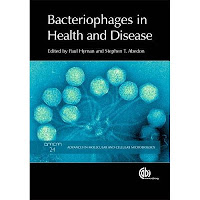 |
| Dr. Melissa Beck |
At
Ashland, I had the opportunity to work on equipment and projects that many
other undergraduate students at small private universities don’t get. In
fact, many undergraduate students at large universities don’t get these same
opportunities either. I worked on a study using live animals that was
eventually published, and we did everything from caring for the rats, dosing
them, testing them in a functional observational battery and collecting tissues
for analysis. In chemistry, I had the opportunity to work with a lot of
equipment most of my colleagues only read about during their undergraduate
experience. I consider myself very fortunate for the opportunities
afforded to me at Ashland.
Currently, I am the Associate Director of Neurosciences and Head of Juvenile Toxicology at WIL Research in Ashland. WIL Research is a Contract Research Organization that performs safety assessment studies for drugs and chemicals. The studies we perform help to ensure the safety of these drugs before they are given to humans. I don’t do a lot of bench work now, but I participate in the design of these studies and am involved in data interpretation and reporting the study results. I find this very fulfilling as I see the drugs I have worked with reaching the market and being used by adults and children. I have also been able to participate in the development of guidances used by regulatory agencies to establish the safety of drugs and chemicals, and I have been able to co-author 3 book chapters on safety assessment for pediatric drugs.
What role did your education at AU play in your seeking out your current occupation?
At Ashland, I studied Toxicology, a program that is only offered at a handful of undergraduate institutions. While in this program, I had the opportunity to work with live animals on an independent research study. I learned that I have a love for research, which prompted me to earn a PhD in Toxicology from the University of Michigan. After that, I joined WIL Research, which gives me the opportunity to put my education in Toxicology to use daily.
What advice do you have for current AU science majors?
I
think it is very easy for an undergraduate science major to believe
that the only opportunities for them are to be a doctor or science
teacher. Both of these occupations are very worthy, but they
are just a drop in the bucket as to what you can do with a science
education. When I started at Ashland, I was in the Biology program and
assumed I would end up becoming a doctor. A friend encouraged me to
take a Toxicology elective with her and the rest
is history. So, I would encourage current AU science majors to take
electives and look outside the box for potential careers.
What career advice can you give to future graduates of the AU science program?
There are many different things one can do with a degree in science. I would suggest that they speak with their advisors and ask them for advice. Also, look through the list of graduates and contact them to see what they are doing. Get involved in an internship or shadow someone in a field you might have interest in. Look through the research interests of faculty at grad schools you may want to attend. If you have an interest, there is likely a way to apply your degree to that interest and there is probably someone who can assist you in reaching your goal.




















